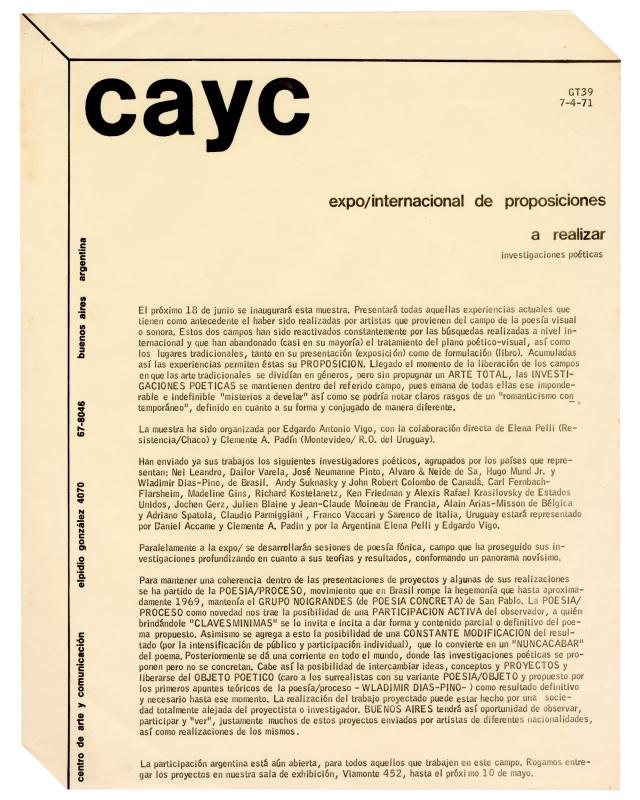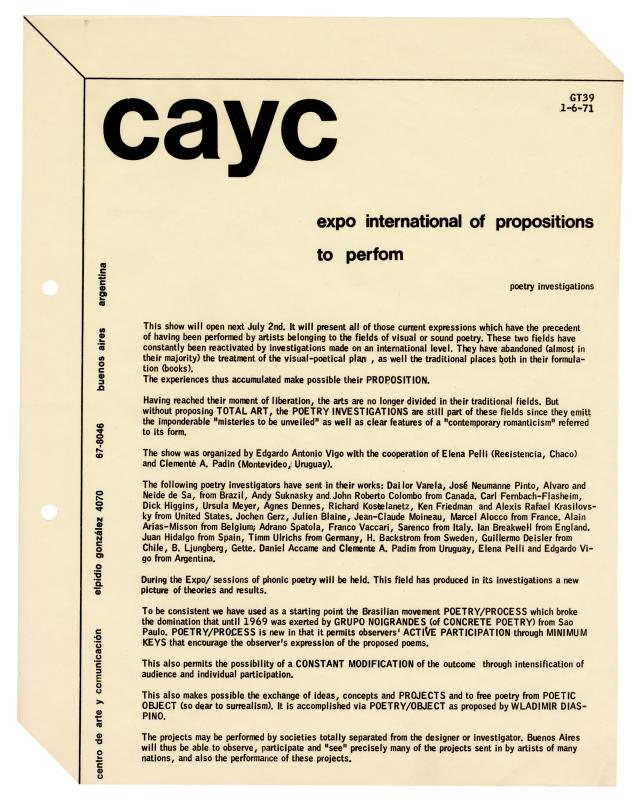Ever since it was founded, the CAYC (Centro de Arte y Comunicación), helmed by the cultural promoter, artist, and businessman Jorge Glusberg, was intended as an interdisciplinary space where an experimental art movement could flourish. The establishment of collaborative networks connecting local and international artists and critics played an important role in this process.
During its early years, the CAYC organized a series of Jornadas Intensivas de Discusión, which sought to establish connections between art and scientific thinking in order to create a new social reality. The first series, which took place in 1970, addressed the topics: “art and industry” (GT-03), “art and psychology” (GT-05), and “art and science” (GT-19), among others. The 1971 program began with a discussion on the subject of “art and photography” (GT-31). The second event, announced in this newsletter, focused on the latest developments in the field of experimental poetry—visual, concrete, participatory, and processual—and its links to semiotic language and the theory of communication.
The subject of the event was based on the Exposición Internacional de Proposiciones a realizar. Investigaciones poéticas, which was organized at the CAYC by Edgardo Antonio Vigo assisted by Elena Pelli and Clemente A. Padín (a Uruguayan artist whose specialty was mail art). The exhibition included works by twenty-eight international artists who were involved in the contemporary experimental poetry scene, some of whom are mentioned here as panelists at the discussion workshop.
The Exposición was based on Vigo’s ideas about poetry at the time and on Padín’s work and included a wide range of experimental practices, demonstrating the existence of an extensive collaborative network among artists, and establishing the so-called innovative nature of the various “proposals.” The key factor in these works was their reliance on the active participation of viewers. The name of the exhibition underscores the transitory, never definitive or final, and even “nonexistent” quality of the works on display. As stated in a phrase that goes to the very heart of the discussion: “Poetic explorations are proposed, but never materialized. This allows for the exchange of ideas, concepts, and PROJECTS while remaining unencumbered by the need for a POETIC OBJECT … as a final and necessary result” (GT-39; doc. no. 1476286 and doc. no. 1478227).


